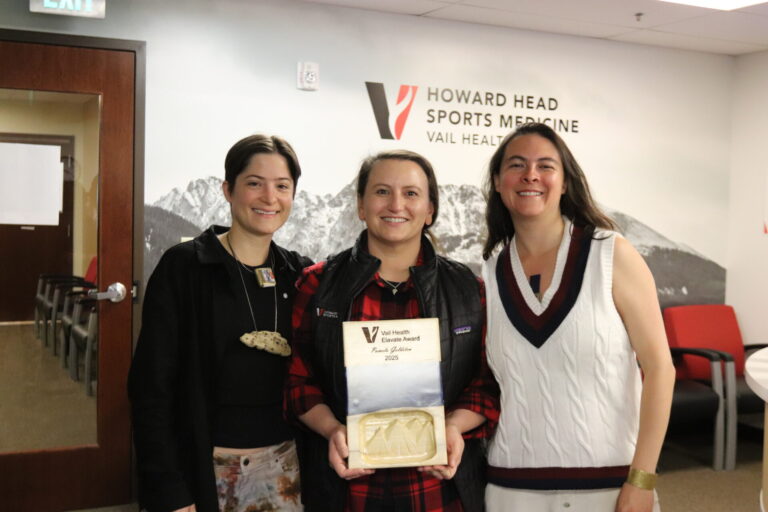Hammaker: How the COVID-19 Vaccine Works
This article first appeared in the Vail Daily on December 17, 2020.
At Vail Health this week, we received our first shipment of the Pfizer mRNA vaccine, and after it is approved by the FDA with an Emergency Use Authorization, we expect to receive the Moderna mRNA vaccine in the coming weeks.
While the vaccine is new and has been produced quickly, mRNA technology has been around for many years. The vaccine essentially takes a piece messenger RNA from the viral cell and causes our bodies to produce the protein that triggers the immune response and antibodies to ward off infection.
An mRNA vaccine does not actually contain the virus itself. An analogy is to think of it as an email sent to the muscle cells at the injection site that shows what a piece of viral protein looks like and then — like a Snapchat message — it disappears. Our bodies will develop an immune response to kill the viral protein and remember how to recognize it in the future. It is an amazing technology and a breakthrough in modern medicine.
While there are some potential minor side effects, it is important to note that minor side effects are common with all vaccines, and when compared to the flu vaccine given annually, the percentage of trial patients who reported symptoms with the COVID-19 vaccine is substantially lower. The reported side effects were also mild in nature in the more than 21,000 individuals who were vaccinated in the Pfizer study.
The vaccine is a two-dose series, so we will be giving injections to our high-risk health care workers and first responders before the end of the year and then scheduling follow-up booster shots 21 days later. During the time between the first dose and for two weeks after the second dose, a vaccinated person is not considered protected, which is a five-week time span. It is imperative that people return for their booster shot or the efficacy of the vaccine is greatly reduced.
Vaccines have been a part of modern health care for more than 100 years. This particular virus has ravaged our vulnerable populations, our economy, and our routine daily living. Achieving a high percentage of vaccinated individuals across the globe will help to protect our staff, our patients, and our loved ones. As Eagle County Public Health stated, the vaccine is only as successful as the number of people who receive it.
We have done an amazing job as a health care system and a community in fighting this virus and taking actions that help keep all of us and our loved ones safe. On behalf of the medical team at Vail Health, thank you to everyone in the community who diligently took precautions for the past 10 months. With our continued efforts, we can continue to beat this virus back and protect those around us.
Barry Hammaker, MD, is the chief medical officer at Vail Health.


